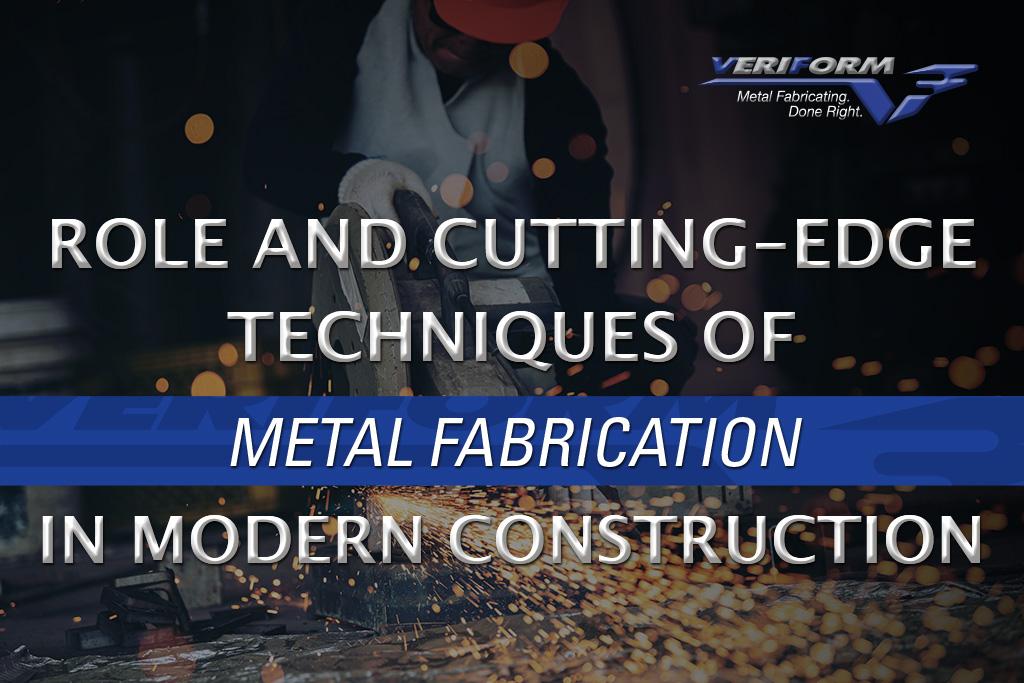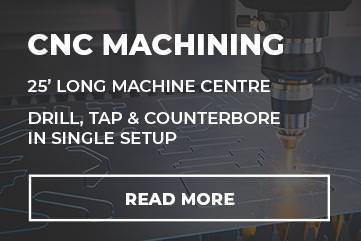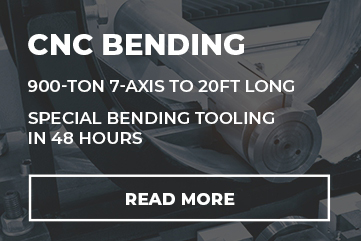Role and Cutting-Edge Techniques of Metal Fabrication in Modern Construction

Metal fabrication is a cornerstone of modern construction, pivotal in shaping the built environment. From structural components to decorative elements, metal fabrication encompasses diverse processes and techniques that contribute to constructing buildings, bridges, and infrastructure. This article analyzes the evolving role of metal fabrication in modern construction, highlighting cutting-edge techniques and innovations shaping the industry’s landscape. From aluminum fabrication to advanced welding methods, metal fabrication continues to push the boundaries of what is possible in construction.
Expansion of Metals Fabrication in Construction
Metal fabrication has been a fundamental part of construction for centuries, dating back to ancient civilizations such as the Egyptians and Romans. Early metalworkers forged iron and bronze into tools, weapons, and architectural elements, laying the foundation for modern metal fabrication techniques. With the advent of industrialization, the development of machinery and manufacturing processes revolutionized metal fabrication, allowing for mass production and greater precision in construction.
Technical Improvement
Technological improvements have propelled metal fabrication to new heights in recent decades, transforming how construction projects are planned, designed, and executed. Computer-aided design (CAD) software enables architects and engineers to create intricate metal components precisely and efficiently. At the same time, advanced fabrication techniques such as laser cutting and 3D printing have revolutionized manufacturing. These technologies have expanded the possibilities of metal fabrication, allowing for greater customization, complexity, and innovation in construction projects.
The Role of Metal Fabrication in Modern Construction
Structural Components
Metal fabrication is critical in producing structural components for buildings, bridges, and infrastructure projects. Steel beams, columns, and trusses form the backbone of many structures, providing strength, stability, and durability. Advanced fabrication techniques such as computer numerical control (CNC) machining and robotic welding ensure the precise fabrication of complex structural elements, allowing for efficient assembly and construction on-site.
Architectural Features
In addition to structural components, metal fabrication creates architectural features that enhance buildings’ aesthetic appeal and functionality. Ornamental metal work, such as railings, gates, and facades, adds character and style to architectural designs, while functional elements like stairs, canopies, and cladding provide practical solutions for building occupants. Aluminum fabrication, in particular, offers versatility and aesthetic flexibility, allowing architects to incorporate metal elements into their designs in innovative ways.
Cutting-edge techniques in Metal Fabrication
Laser Cutting
Laser cutting is a precision machining process that uses a high-powered laser beam to cut through metal sheets with exceptional accuracy and speed. This technology allows for precisely cutting intricate shapes and patterns, making it ideal for creating custom metal components with complex geometries. Laser cutting is widely used in metal fabrication for applications ranging from signage and decorative panels to structural components and aerospace parts.
3D Printing
3D printing, also known as additive manufacturing, is revolutionizing the metal fabrication field by enabling the production of complex metal parts with unprecedented speed and efficiency. This technology builds up metal layers, one at a time, to create three-dimensional objects directly from digital design files. 3D printing offers designers and engineers greater design freedom and flexibility, allowing for the creation of lightweight, high-performance metal components with intricate internal structures.
Advantages of Metal Fabrication in Construction
Strength and Durability
Metal fabrication offers unmatched strength and durability, making it an ideal choice for structural components in construction projects. Steel, aluminum, and other metals possess inherent properties that provide structural integrity and resist environmental factors such as corrosion, fire, and seismic activity. Metal fabrication techniques such as welding, forging, and casting further enhance the strength and durability of metal components, ensuring the long-term performance of buildings and infrastructure.
Customization and Versatility
One key advantage of metal fabrication is its ability to be customized to meet the unique requirements of each construction project. From small-scale architectural details to large-scale structural elements, metal fabrication offers unparalleled versatility in design, allowing architects and engineers to create bespoke solutions that meet their specific needs. Advanced fabrication techniques such as CNC machining and 3D printing enable precise customization and complex geometries, opening up new possibilities for creativity and innovation in construction.
Environmental Sustainability
Metal fabrication is increasingly recognized for its environmental sustainability, with advancements in materials, processes, and recycling initiatives reducing its carbon footprint. Aluminium fabrication is highly recyclable, with a significant portion of the world’s metal supply coming from recycled sources. Metal fabrication processes such as waterjet and plasma cutting use minimal resources and produce little waste, reducing environmental impact. Additionally, metal structures and components have a long service life. They can be easily repurposed or recycled at the end of their use, contributing to a circular economy and sustainable construction practices.
Conclusion
Metal fabrication is vital in modern construction, providing strength, durability, and versatility to buildings, bridges, and infrastructure projects worldwide. From structural components to architectural features, advanced fabrication techniques and materials are pushing the boundaries of what is possible in construction, enabling architects and engineers to create innovative designs that meet the demands of today’s built environment. As technology evolves, metal fabrication will remain at the forefront of construction, driving progress and shaping the industry’s future.
FAQs
What is metal fabrication, and how does it contribute to construction?
Metal fabrication encompasses a range of processes used to create metal structures and components for construction projects. From structural steel beams to decorative metalwork, metal fabrication is vital in providing strength, durability, and versatility to buildings, bridges, and infrastructure projects.
What are some examples of metal fabrication techniques used in construction?
Metal fabrication techniques used in construction include welding, cutting, bending, machining, and forming. Advanced techniques such as laser cutting, 3D printing, and CNC machining are increasingly being used to create custom metal components with precision and efficiency.
How does aluminum fabrication differ from other metal fabricating processes?
Aluminum fabrication involves shaping, cutting, and welding aluminum alloys to create structural and decorative elements for construction projects. It offers lightweight, corrosion-resistant solutions with high strength-to-weight ratios, making it ideal for various construction applications.
How does metal fabrication contribute to environmental sustainability in construction?
Metal fabrication contributes to environmental sustainability in construction through materials recycling, resource efficiency, and waste reduction initiatives. Metals such as steel and aluminum are highly recyclable, and advanced fabrication processes minimize resource consumption and waste generation, promoting sustainable construction practices.
TAG








